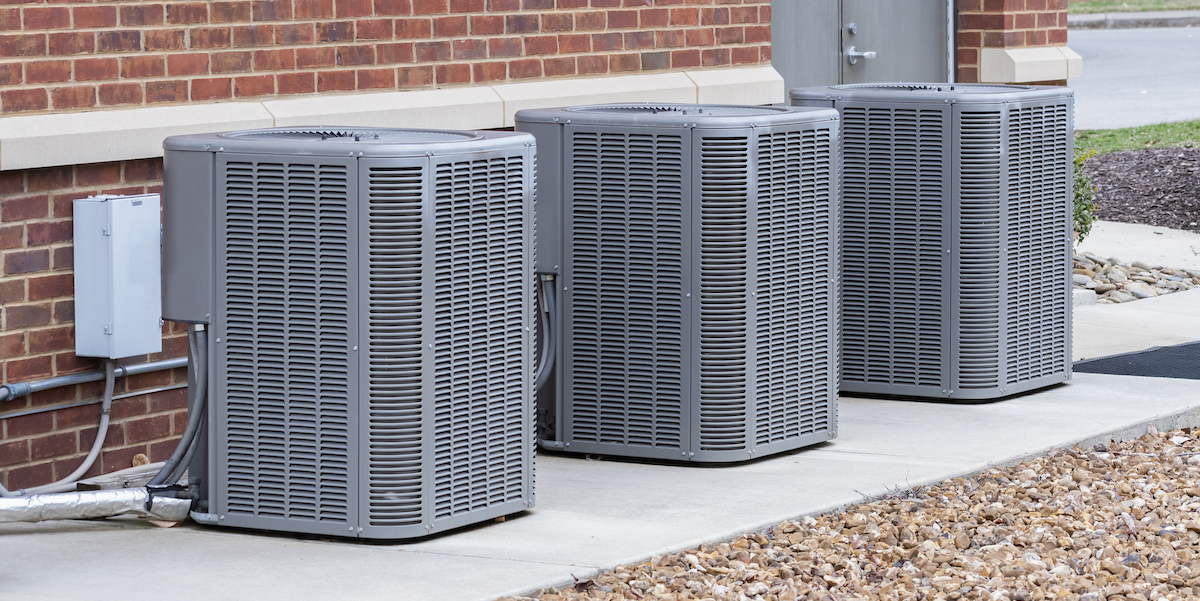Water damage is a common and costly problem for homeowners in the Wood River Valley, ID, especially when it involves HVAC systems. An HVAC system, which stands for heating, ventilation, and air conditioning, is designed to make your home as comfortable as possible.
A well-maintained HVAC system keeps your home cool in the hottest months of summer and warm deep into winter with high efficiency and a high quality of air purity. But Idaho’s changing climate puts additional strain on HVAC units, making preventative maintenance crucial.
Like any household appliance, problems with your HVAC system lead to risks like leaks, which eventually become water damage in your home, which can then lead to structural damage and mold growth. Learn how to prevent HVAC water damage and avoid future home repair and mold remediation costs.
How Does HVAC Water Damage Happen?
Leaks in an HVAC system are typically due to issues with an air conditioning unit. And in most cases, an overflowing drain pan is the main culprit. Have you ever noticed condensation near an air conditioner? That’s because air conditioners remove moisture from the air, creating condensation, moving from an indoor coil through a drain line and towards a drain pan.
Damage like holes and cracks in drain pans can cause them to leak, but an overflow is likely caused by dirt or debris buildup that clogs the drain pan. Both ductless air conditioning units and central air conditioning-furnace combo units are at risk for overflows or leaks. When the damage is severe, you might notice water spots on the ceilings or walls of affected areas.
Types of Water Damage
Water damage is typically characterized as one of three categories, depending on the severity:
- Category 1 Water Damage – water damage from a source that does not pose substantial harm like rain, snow, or ice, appliance water lines, tub and sink overflows, or leaks from clean toilet bowls without any additives.
- Category 2 Water Damage – water damage from significantly contaminated water sources containing microorganisms like sprinkler water, water from sump pump collapses, toilet overflow (without feces), dishwasher discharge, and hydrostatic pressure seepage.
- Category 3 Water Damage – grossly contaminated or “black water” like sewage, toilet backflows, contaminated river or stream water, or Category 2 Water that has not been removed from an affected structure.
In most cases, water damage from an HVAC system will probably earn a Category 1 designation. However, that doesn’t mean it doesn’t require professional help. Don’t risk further damage or the possibility of a mold outbreak in your home.
Maintaining Your HVAC Systems
Here are key strategies to protect your home and ensure your HVAC system operates efficiently.
- Regular Maintenance: Stop HVAC issues before they even start. Scheduling annual HVAC maintenance visits from a professional can help prevent potential leaks and problems before severe water damage occurs.
- Check Your Drain Pan: Simply checking your drain pan for rust and corrosion while thoroughly cleaning it at the start of warmer seasons can significantly reduce your risk of a clog or leak.
- Install a Drain Pan Overflow Switch: Another measure to consider is installing a float switch or a condensate overflow switch. Should condensation water reach a certain level in your drain pan, a float switch turns off your air conditioning unit to prevent an overflow entirely.
- Clean and Unclog Drain Lines: Ensure the condensate drain line is clear of debris to prevent water from backing up and causing leaks.
- Seal Ductwork: Properly sealed duct work prevents condensation, reducing the risk of water damage while improving system efficiency.
- Use a Dehumidifier: A dehumidifier reduces indoor humidity levels, preventing excess moisture and minimizing strain on the HVAC system. Especially given the air climate in Palm Springs.
Should you see signs of a leak, act quickly. Shut down your air conditioning unit and contact a professional. Even a tiny amount of water can cause significant damage to your home. At Valley Restoration, our IICRC-trained and certified technicians will not only identify the source of the leak and fix it but also restore any damaged areas of your home to their previous condition.
Full Service Disaster Restoration for Over 50 Years
Home disasters can be scary and overwhelming, but you don’t need to face the unknown alone. If a small HVAC issue turns into a full-blown emergency, our water damage restoration experts are here to address the problem and return your home to its previous condition.
At Valley Restoration, our certified IICRC technicians are committed to providing you with the finest property restoration service possible using the most recent technology and state-of-the-art equipment. We have the knowledge, experience, and expertise to restore your home or business, bring you peace of mind, and leave your property in better condition before any loss or damage that occurred.
Since 1968, we’ve helped families and business owners in the Wood River Valley area take the right steps to restore their properties and rebuild their lives in the face of disaster. Are you seeking a reliable, full-service disaster recovery service in the Ketchum, Sun Valley, Hailey, and Bellevue, Idaho areas? Contact Valley Restoration today!

